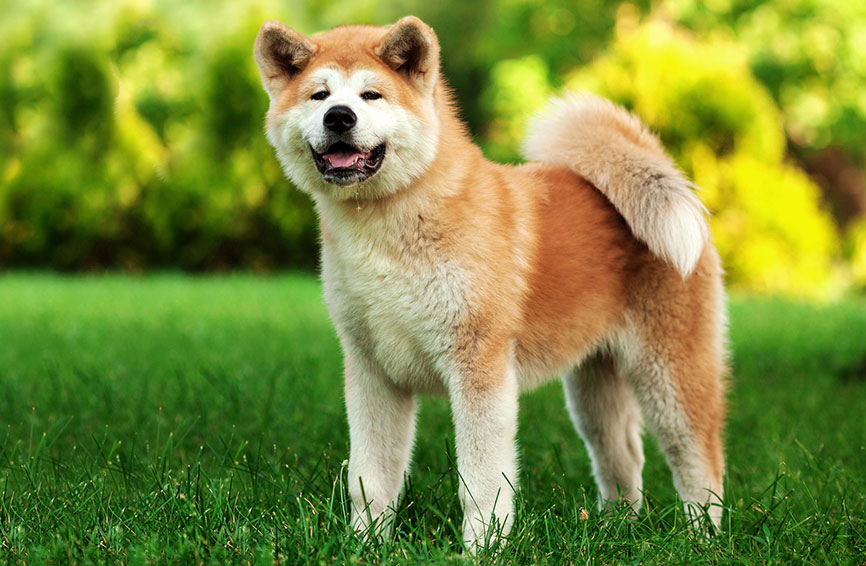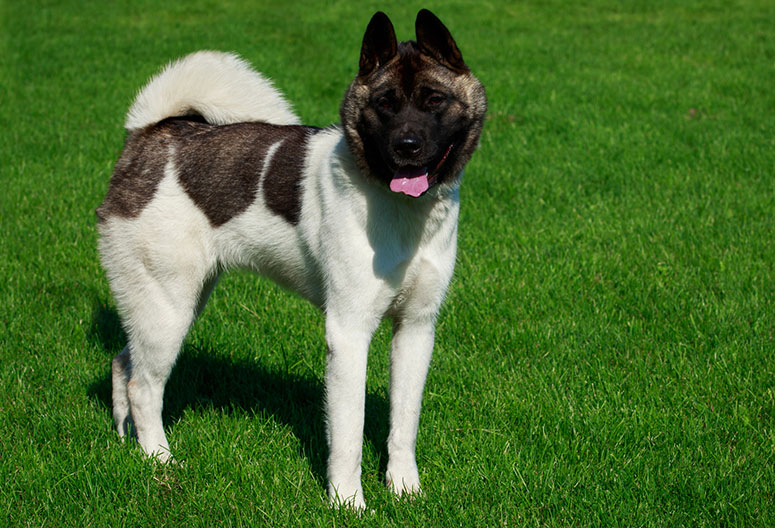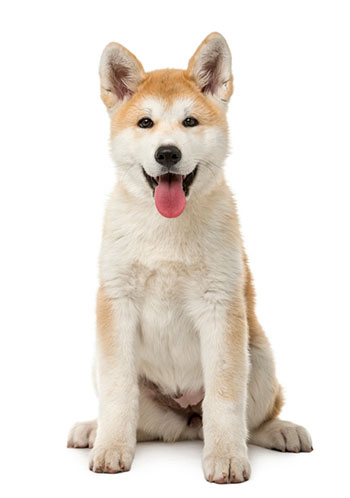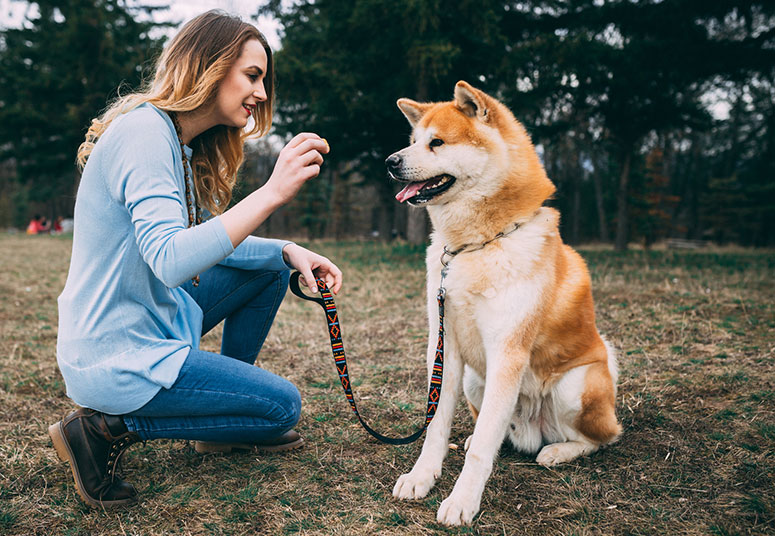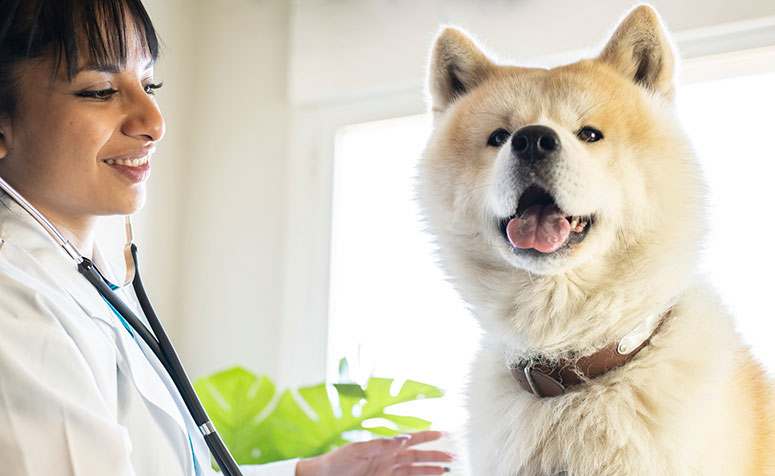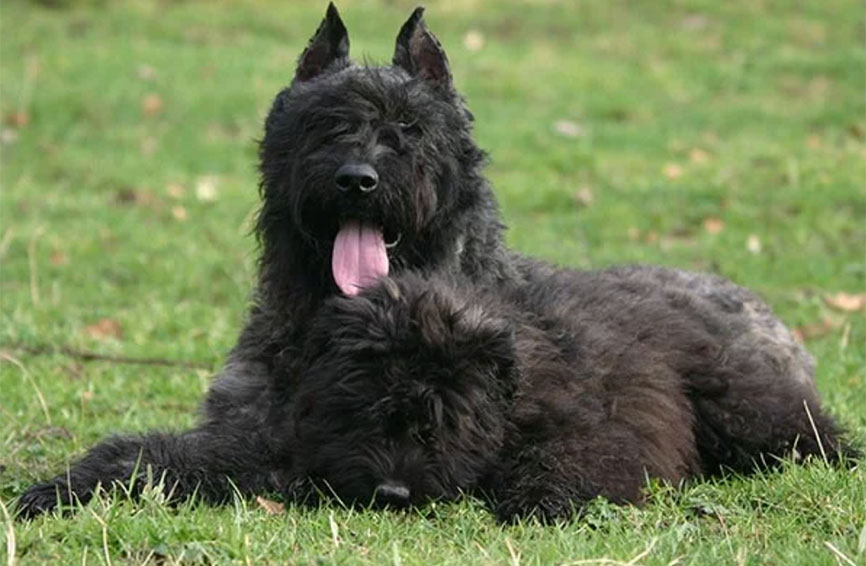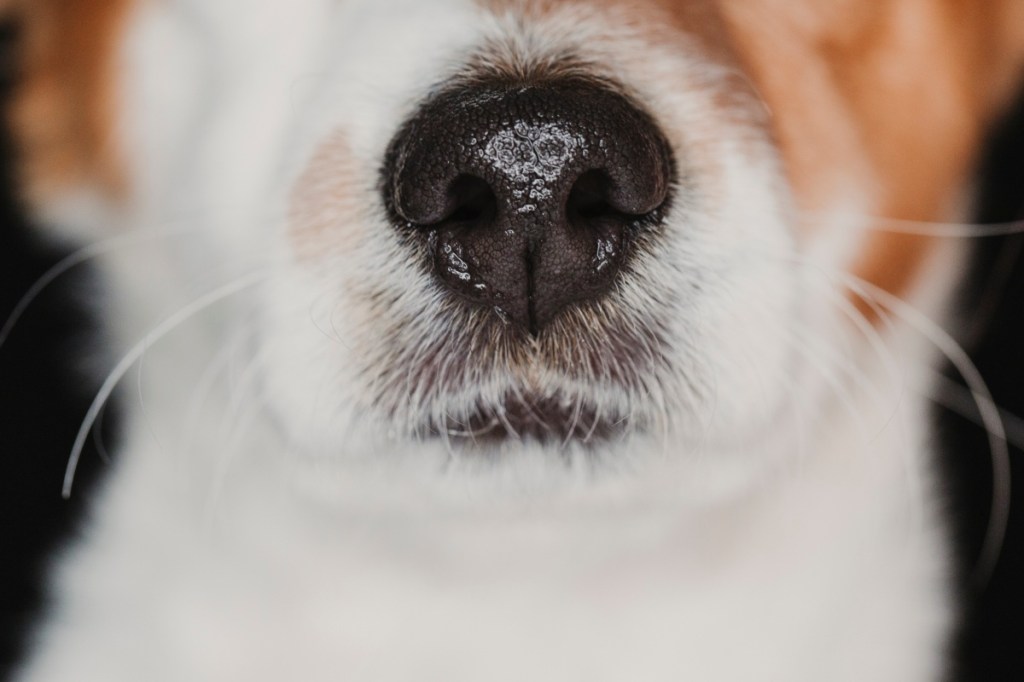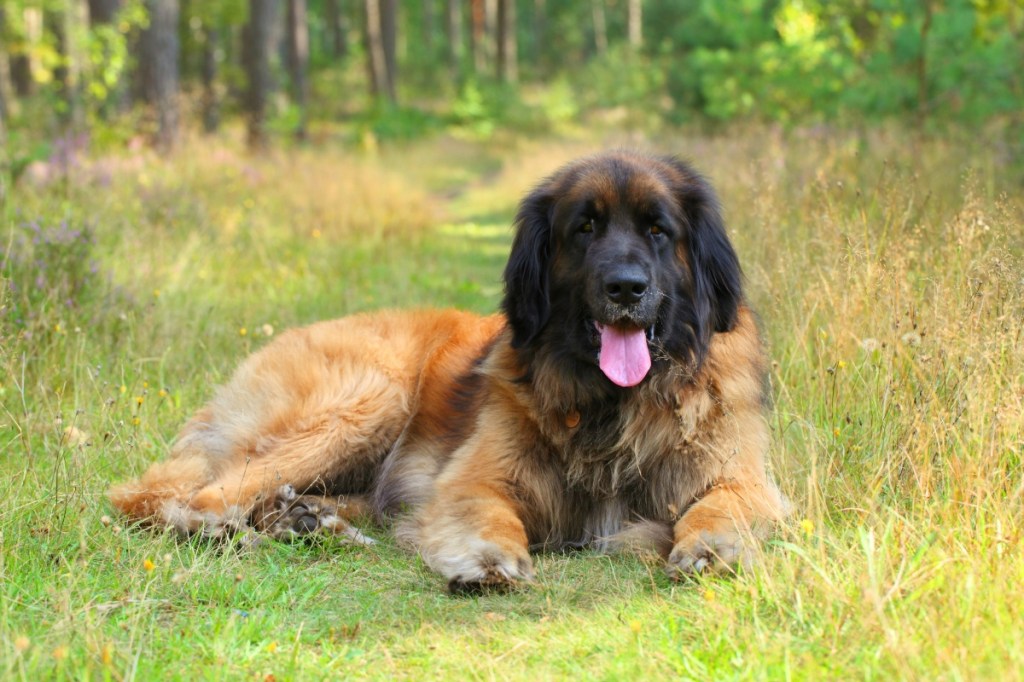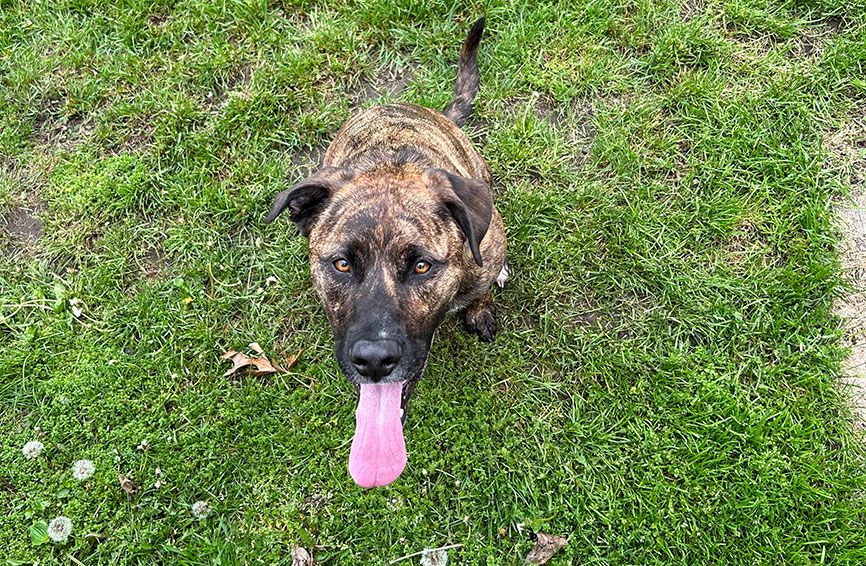Table of Contents
Introduction to Akitas
With origins in Japan, the Akita is a dog breed in the Working Group and known for being loyal and courageous. These are large and powerful dogs with an intimidating presence but a loving heart. They have been used for hunting and guarding nobility in the past. Today, they serve as protective guardians of their family members and make great watchdogs.
If you are ready to bring an Akita into your life as the only pet in the house, read on to learn more about the breed and why it’s so important to have dog insurance to help pay for vet bills throughout your Akita’s life.
Size of Akitas
Akitas are large dogs that reach weights up to 100 to 130 pounds for males and 70 to 100 pounds for females. When fully grown, males stand 26 to 28 inches tall, and females stand 24 to 26 inches tall. Akitas are mostly done growing by the age of 10 months; however, they usually continue to gain some healthy weight until the age of two.
Here’s how big you can expect your Akita to get as the dog grows from puppyhood to adulthood:
| Weight Chart | 3 months | 6 months | 9 months | 12 months |
| Male Akitas | 30-40 lbs. | 55-70 lbs. | 75-95 lbs. | 95-125 lbs. |
| Female Akitas | 30-40 lbs. | 50-65 lbs. | 65-85 lbs. | 70-95 lbs. |
Characteristics of Akitas
You will find that Akitas are affectionate with family members but wary with strangers. They are often intolerant of other animals, making them great candidates for being the only pet in the house. These dogs love human companionship and will do everything possible to protect the ones they love.
However, they are also independent thinkers and can be challenging to train for first-time pet parents. Akitas have strong personalities that might come across as overwhelming. They need loving discipline and plenty of attention so that they don’t become bored and destructive. If not properly trained and socialized, Akitas can be aggressive with other dogs, especially dogs of the same sex, and unfamiliar people.
As you get to know an Akita’s personality, here’s what you can expect based on his or her breed characteristics:
| Breed Characteristic | Level (High, Medium, Low) |
| Affectionate with People | Medium |
| Good with Kids | Low |
| Good with Pets | Low |
| Need for Exercise | Medium |
| Energy Level | Medium |
| Intelligence Level | Medium |
| Able to Be Trained | Medium |
| Amount of Barking | High |
| Amount of Shedding | High |
History of Akitas
Two breeds of Akita exist: the American Akita and the Japanese Akitainu. They are dignified and courageous spitz-type dogs that originated in the early 17th century in northern Japan. Derived from the Matagiinu (a landrace known for hunting) and the Karafutoken (a landrace known for transporting cargo), the Akitainu of the past was hearty enough to hunt bear, deer, boar, and other big game across the mountainous terrain of Japan’s snow country. As dog fighting became an unfortunately popular sport in the late 1800s, the native regional landrace dogs were mixed with large western breeds to increase size and power, which began eliminating the quintessential characteristics of the native Japanese breed — stand-up ears, tuck up and curled tail.
In the early 1900s, there was a call to protect and preserve native Japanese breeds by academics and government officials. In 1927, the Akitainu Hozonkai (Akita Dog Preservation Society) was established in Odate, Akita Prefecture, followed by the Nihonken Hozonkai (Japanese Dog Preservation Society) in 1928, based in Tokyo. By 1931, the Akitainu was declared a natural monument by the Japanese government but the breed was still decades away from being considered completely restored.
Helen Keller imported the first Akita dog to the U.S. in 1937 and the second one in 1939; both were male half-brothers. The breed very nearly died out during World War II when the Japanese government forced citizens to surrender non-military dogs for pelts to line uniform jackets and food. Just 18 Akitainu survived the war, but efforts to restore and preserve the breed brought it back from the brink of extinction in the post-war era. In Japan, breeders concentrated their efforts to remove the western breed appearance in order to restore the Akitainu to reflect the other natural monument native Japanese breeds. The Akita dogs brought to the U.S. in the 1950s were considered by the Japanese preservation societies and historians as a transitional version of the Akita, but dedicated U.S. enthusiasts developed those dogs into what is now referred to as the American Akita.
The Japanese Akitainu is known for being moderately boned in structure and is only slightly larger than the ancestral Matagiinu and Karafutoken. The American Akita is more heavily boned and larger, reflecting the western breeds of its dog-fighting past. Both breeds of Akita are beloved internationally as family protectors and faithful companions.
The American Kennel Club first recognized the dog breed in 1972.
Akita Standard Information
Akitas have massive heads, full rear ends, and curled-over tails. Their dense coats come in several colors, their ears are erect, and their eyes alert and shining with life.
For more information about the general appearance of the Akita, here is an overview of the breed standard information for Akitas:
Head:
- Massive head in balance with the body
- Broad and black nose
- Erect ears
- Dark brown, small, and deep-set eyes
- Strong teeth with scissors bite preferred, level bite acceptable
Neck, Topline, Body:
- Thick and muscular neck, comparatively short on the body
- Large and full tail set high on the body
- Chest wide and deep
Forequarters and Hindquarters:
- Strong and powerful shoulders with moderate layback
- Well-developed upper thighs
- Dewclaws not removed on front legs but generally removed on hind legs
- Cat-like feet with thick pads
Coat:
- Double-coated with undercoat thicker, softer, denser, and shorter than outercoat
- Outercoat is straight, harsh, and stands off the body
- Short hair on legs, ears, and head
- Coat longest and most profuse at tail
Color:
- Any coloring including white, brindle, or pinto acceptable
- Exceptions are any merle marking pattern
Gait:
- Brisk and powerful gait with moderate-length strides
- Back is strong, firm, and level during movement
- Rear legs move in line with front legs
Caring for Akitas
Akitas do not make the best apartment dogs and are better-suited for homes with fenced-in yards. Akitas are playful dogs that require a moderate amount of exercise. They are sensitive dogs that do well in cold weather but don’t like hot weather. They have substantial health and grooming needs since they are prominent shedders and droolers. Furthermore, these dogs can be challenging to groom and prone to weight gain.
Here are some general tips for taking the best care of an Akita:
Best Living Environments:
- House with fenced yard
- Not good for apartment living
- Homes with no other pets
- Always supervise Akitas around children
- Don’t leave Akitas alone for long periods of time
Type of Exercise:
- Moderate exercise needed
- Daily jogs or long walks
- Roaming around a backyard
- Off-leash dog parks are generally not the best for Akitas
Mental Enrichment:
- Quality time with family members
- Combination of indoor and outdoor time each day
- Give an Akita a job to do to prevent boredom
- Switch up your daily routines to keep your Akita engaged
Training Strategies:
- Start training early
- Use positive reinforcement for these sensitive dogs
- Generally easy to potty-train
- Socialize them to other people at an early age
- Use caution around strangers, due to aggression risks
- Seek professional help if aggression develops
Grooming Tips:
- Fairly odorless unless spending a lot of time outside
- Thick coat sheds throughout the year and blows coat once per year
- Brush the coat weekly to reduce fur around the house
Common Health Problems of Akitas
The average life expectancy for an Akita is 10 to 14 years. But you can prolong the healthy life of your Akita by being proactive about the dog’s health with yearly vet checkups and having pet health insurance to ensure that you can pay for whatever treatment your Akita may need.
These are some of the most common health issues that arise with Akitas:
- Hip dysplasia
- Elbow dysplasia
- Gastric dilation-volvulus (bloat)
- Progressive retinal atrophy
- Glaucoma
- Hypothyroidism
- Sebaceous adenitis (genetic skin condition)
- Atopic dermatitis (skin allergies)
- Uveodermatologic syndrome (autoimmune disease)
- Pemphigus foliaceus (autoimmune disease)
Diet and Nutrition for Akitas
Akitas can become overweight quickly if they are too sedentary. Although Akitas are large dogs, they are not as active or energetic as some other large dog breeds. Therefore, they only need about three to five cups of dry dog food per day. Do not let an Akita exercise after eating or drinking lots of water. This can cause bloat, a life threatening condition that affects large and deep-chested dogs.
Where to Adopt or Purchase Akitas
One idea for finding an Akita to bring into your life is to contact the Akita Club of America, the parent club for the breed that has a comprehensive website with information about the breed and resources for finding a purebred Akita puppy. There is also the affiliated Akita Club of America Rescue, which is a nonprofit organization dedicated to finding homes for Akitas in need. Depending on where you live, there may be an Akita-specific rescue group near you. For example, there’s the TikiHut Akita Rescue in Northern California, Bit East Akita Rescue in the New York/New Jersey/Pennsylvania region, and Northwest Akita Rescue in Washington.
Related Breeds
Are you a fan of the Akita breed of dogs? Aside from the Akita, there are other Japanese dog breeds worth learning about.
Here are some examples to research before making the decision to become a new pet parent:
- Kai Ken
- Kishu Ken
- Hokkaido
- Shikoku
- Shiba Inu
Pet Insurance for Akitas
If you have an Akita dog in your household, it is definitely a good idea to look into dog health insurance as soon as possible to protect your furry friend in a proactive way. Healthy Paws offers Akita dog insurance that covers new illnesses and accidents, as well as genetic and hereditary conditions, Akita breed-specific conditions, emergency care, and alternative care.
Healthy Paws plan coverage has no maximum limits on claim payouts and no per-incident, annual, or lifetime caps. You can visit any licensed veterinarian you choose when your Akita isn’t feeling well and submit easy, worry-free claims through our mobile app.
For your Akita health insurance quote, visit our website today, or call us at 855-898-8991 if you have questions about enrolling.
